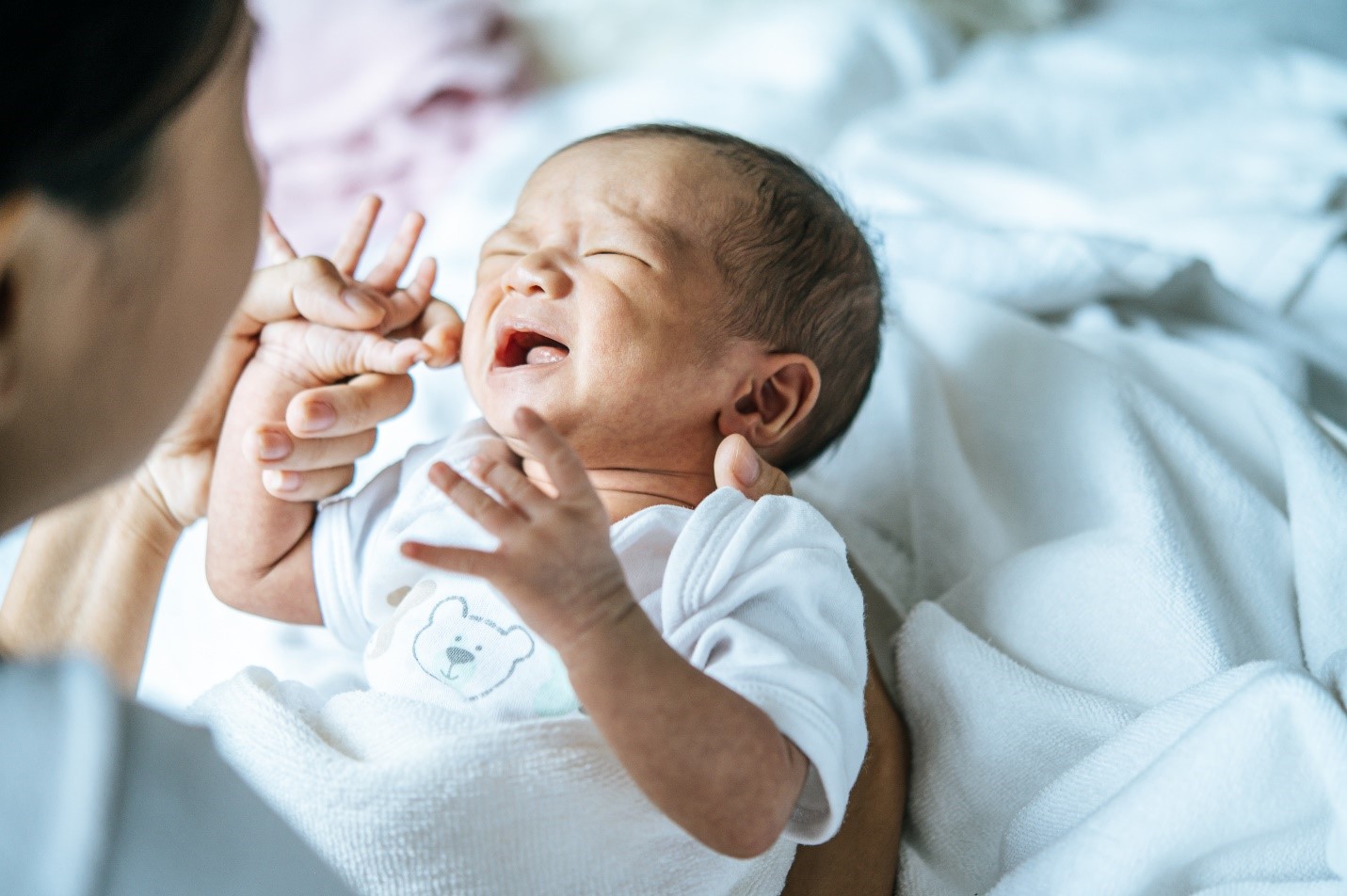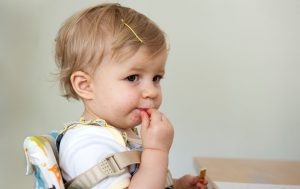Why Babies Dry Out Faster
Newborns are 75 percent water and burn through it quickly: higher respiratory rates, tiny tummies, and immature kidneys mean even one missed feed or a few loose stools can tilt the hydration scale. The American Academy of Pediatrics warns that severe dehydration can develop within 6–12 hours during vomiting illnesses . Knowing early clues—and having a fluid plan—keeps ER trips (and IV lines) off your calendar.
Dehydration Dashboard: Mild → Severe
| Sign | Mild | Moderate | Severe |
| Wet diapers / 24 h | 5–6 | 3–4 | ≤ 2 or none in 8 h |
| Fontanelle (soft spot) | Flat | Slightly sunken | Deeply sunken |
| Mouth & lips | Moist | Tacky | Dry, cracked |
| Tears | Present | Few | None when crying |
| Skin turgor | Normal | Slow recoil | “Tent” stays up |
| Mood | Alert | Irritable | Lethargic, weak cry |
| Breathing | Normal | Faster | Rapid + deep |
If two or more moderate signs appear, start oral rehydration and call your pediatrician. Any severe sign = immediate clinic or ER visit.
Diaper Math: The 6‑8‑10 Rule
| Baby Age | Wet Diapers / 24 h | Stool Count |
| 0–3 days | 1, 3, then 5 | Meconium → seedy yellow |
| 4–7 days | 6 minimum | 3–4 |
| 1–4 weeks | 8 | 3–6 (breastfed) |
| 1–6 months | 6–8 | Varies with diet |
| > 6 months | 5–6 | Solid‑food dependent |
Under‑shoot by more than one diaper on two consecutive days? Evaluate feeding volume and fluid status.
Top Dehydration Triggers in Year One
- Gastroenteritis – vomiting ± diarrhea drains water & electrolytes.
- High fever – every 1 °F rise boosts fluid needs by 10 percent.
- Hot weather – babies can’t sweat efficiently; stroller walks in 95 °F sun accelerate loss.
- Breastfeeding challenges – poor latch or low supply reduces intake.
- Respiratory infections – stuffy nose = hard suck, fewer feeds.
Track risk days with a simple phone note: date, trigger, fluid strategy.
Home‑Care Hydration Plan
Breastfed Babies
- Offer on‑demand, at least every 2 hours during illness.
- Pump and syringe‑feed 5–10 ml if baby too weak to latch.
- Continue breast milk exclusively for electrolytes & antibodies.
Formula‑Fed Babies
- Resume full‑strength formula once vomiting pauses 2 hours.
- If vomiting persists: give 30 ml oral‑rehydration solution (ORS) every 30 min × 3; then restart formula.
ORS Guidelines
| Weight | ORS Bolus | After Each Stool / Vomit |
| < 4 kg | 30 ml | 5 ml |
| 4–8 kg | 60 ml | 10 ml |
| > 8 kg | 90 ml | 15 ml |
Use pharmacy‑grade ORS; homemade (salt‑sugar) mix is for emergencies only.
Monitoring Toolkit
| Tool | Ideal Range | Action If Off |
| Digital scale | Wt loss < 3 % | 3–5 % → clinic check |
| Thermometer | 97–100 °F | ≥ 100.4 °F in < 3 mo → ER |
| Diaper log sheet | ≥ 6 wets | Fewer → start ORS |
| Capillary refill test | < 2 s | ≥ 3 s → call doctor |
Keep kit in nursery drawer; weigh baby same time daily, undressed.
Myth‑Busting Corner
Myth 1: “Plain water is safest for thirst.”
Reality: Water lacks sodium—excess dilutes blood in under‑6‑month-olds, risking seizures.
Myth 2: “Pedialyte ice pops are treats only.”
Reality: Frozen ORS slush counts as full fluid dose and soothes teething gums.
Myth 3: “A sunken fontanelle shows late dehydration.”
Reality: Fontanelle changes lag behind diaper output; rely on diapers first.
Sample 24‑Hour Hydration Log
| Time | Intake (ml) | Output | Signs | Action |
| 7 a.m. | 90 milk | Wet #1 | — | Normal |
| 10 a.m. | 60 ORS (vomit earlier) | Wet #2, loose stool | Fontanelle flat | Continue ORS |
| 1 p.m. | 90 milk | Wet #3 | Tears present | Good |
| 4 p.m. | 60 ORS | Wet #4 | Mouth moist | — |
| 7 p.m. | 90 milk | Wet #5 | Active | Resume routine |
| 10 p.m. | 60 milk | Wet #6 | Sleeping | Log OK |
Bring log to appointments—trend lines trump single data points.
When to Escalate to IV Fluids
- Weight loss > 5 percent in 24 hrs.
- Repeated vomit > 6 times per 8 hrs despite ORS.
- No urine > 8 hrs.
- Sunken eyes + lethargy.
- Blood in stool or vomit.
Same‑day fluid checks on request—our clinic runs bedside ultrasound bladder scans and rapid serum electrolytes.
Preventing Dehydration During Hot Spells
- Feed before outings, not after heat exposure.
- Shade stroller; attach clip‑on fan, not mist sprayer (cools skin but not core).
- Dress in single cotton layer; overdressing accelerates sweat loss.
- Schedule playtime before 10 a.m. or after 6 p.m.
External Resources to Bookmark
- CDC Oral Rehydration Guide – mixing & dosing chart.
- La Leche League Hydration FAQs – breastfeeding during illness.
Both open in new tabs so you can keep this checklist visible.
One‑Minute Parent Self‑Check
| Question | Yes / No |
| Did baby pee within last 6 hrs? | |
| Are lips moist and tongue pink? | |
| Is fontanelle level when upright? | |
| Does baby respond to your voice? |
Any “No” = review hydration plan, call clinic if two “No’s.”
Bottom Line
Diaper counts and soft‑spot checks catch fluid loss early. Combine rapid ORS dosing, meticulous logs, and quick professional input to keep little bodies hydrated and thriving.
Need Peace of Mind Today?
Same‑day fluid checks on request—our pediatric team weighs, assesses, and rehydrates babies before dehydration turns dangerous.







